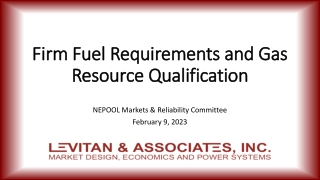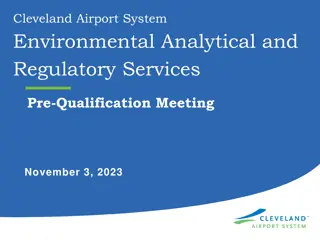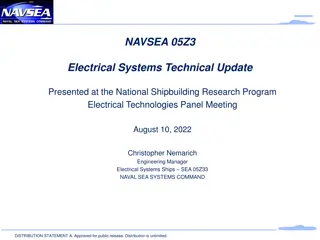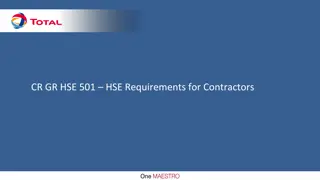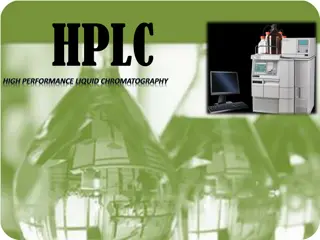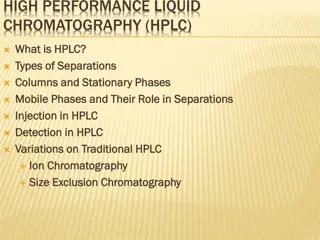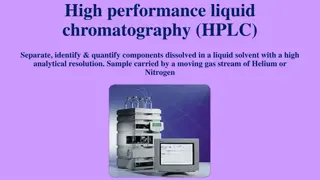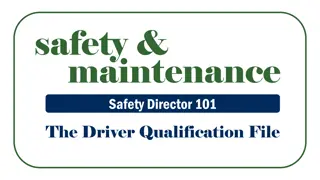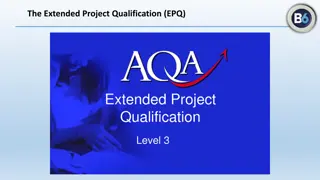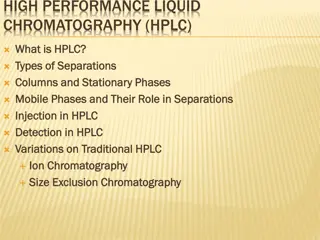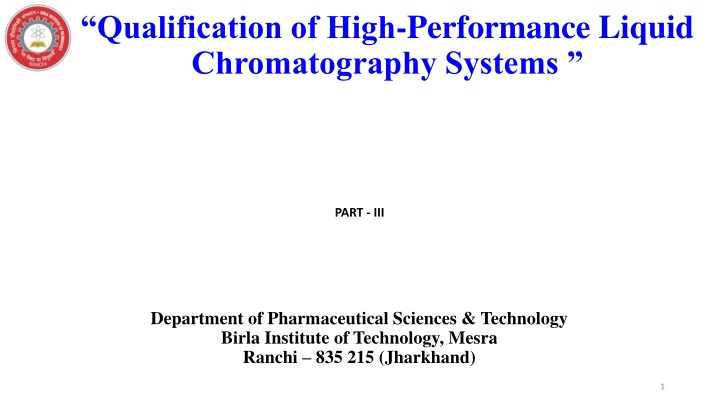
Qualification of High-Performance Liquid Chromatography Systems - Overview
Learn about the qualification process of High-Performance Liquid Chromatography (HPLC) systems, including installation qualification (IQ) steps, requirements, and procedures. Explore the importance of stationary and mobile phases in chromatography for efficient separation of components.
Download Presentation

Please find below an Image/Link to download the presentation.
The content on the website is provided AS IS for your information and personal use only. It may not be sold, licensed, or shared on other websites without obtaining consent from the author. If you encounter any issues during the download, it is possible that the publisher has removed the file from their server.
You are allowed to download the files provided on this website for personal or commercial use, subject to the condition that they are used lawfully. All files are the property of their respective owners.
The content on the website is provided AS IS for your information and personal use only. It may not be sold, licensed, or shared on other websites without obtaining consent from the author.
E N D
Presentation Transcript
Qualification of High-Performance Liquid Chromatography Systems PART - III Department of Pharmaceutical Sciences & Technology Birla Institute of Technology, Mesra Ranchi 835 215 (Jharkhand) 1
High-Performance Liquid Chromatography (HPLC) Systems Image reference: http://www.pharmatips.in/Articles/Pharmaceutical-Equipment/HPLC-Operation- Calibration.aspx 2
Introduction Of HPLC HPLC stands for High-performance liquid chromatography (sometimes referred to as High- pressure liquid chromatography). Chromatography : physical method in which separation of components takes place between two phases 1. Stationary phase and 2. Mobile phase Stationary phase : The substance on which adsorption of the analyte (the substance to be separated during chromatography) takes place . It can be a solid, a gel, or a solid liquid combination Mobile phase : Solvent which carries the analyte (a liquid or a gas) powerful tool in analysis, it yields high performance and high speed compared to traditional columns chromatography because of the forcibly pumped mobile phase. 3
Installation Qualification (IQ) Verity approved purchase order. Verity invoice Check manufacturer and supplier. Verity model number and serial number. Check for any physical damage. Confirm location and installation requirements per recommendation of manufacturer. Verify that the required utilities are available. Installation shall be conducted per instructions provide in the manual. 5
Before installation Obtain manufacturer's recommendations for installation site requirements. Check the site for the fulfillment of the manufacturer s recommendations (utilities such as electricity, and environmental conditions such as humidity and temperature). Allow sufficient shelf space for the equipment, SOPs, operating manuals and software. 6
During installation Compare equipment, as received, with purchase order (including software, accessories, spare parts) Check documentation for completeness (operating manuals, maintenance instructions, standard operating procedures for testing, safety and validation certificates) Check equipment for any damage Install hardware (computer, equipment, fittings and tubings for fluid connections, columns in HPLC and GC, power cables, data flow and instrument control cables) Contd. 7
Switch on the instruments and ensure that all modules power up and perform an electronic self-test. Identify and make a list with a description of all hardware, include drawings where appropriate. Run test sample and compare chromatogram print-out with reference chromatogram List equipment manuals and SOPs,Prepare an installation report 8
Table 1:-IQ steps before and during installation Reference:-L. Huber, Validation and qualification in analytical laboratories, Text book, 300 pages, 1998, Interpharm, Bufallo Grove, IL, USA, Nov. 1998 9
Operation Qualification (OQ) Operational qualification (OQ) is the process of demonstrating that an instrument will function according to its operational specification in the selected environment It verifies that the HPLC system complies with key functional and operational requirements as specified in the design qualification. In modular HPLC systems it is recommended to perform system tests (holistic testing), rather than performing tests module by module (modular testing). Individual module tests should be performed as part of the diagnosis if the system fails. Furman and Layloff, two US FDA employees (6) have first promoted this holistic approach computerized HPLC systems. 10
An example of a typical test report is shown Figure 2. OQ report obtained from the HP ChemStation for the HP1100 Series HPLC Reference:-L. Huber, Validation and qualification in analytical laboratories, Text book, 300 pages, 1998, Interpharm, Bufallo Grove, IL, USA, Nov. 1998 11
Performance Qualification (PQ) PQ should be performed on a daily basis or whenever the instrument is used. The test frequency not only depends on the stability of the equipment but on everything in the system that may contribute to the analysis results. For a liquid chromatograph, this may be the chromatographic column or a detector s lamp. The test criteria and frequency should be determined during the development and validation of the analytical method. In practice, PQ can mean system suitability testing, where critical key system performance characteristics are measured and compared with documented, preset limits. For example, a well-characterized standard can be injected 5 or 6 times and the standard deviation of amounts are then compared with a predefined value. PQ tests are applications specific. If the limits of detection and/or quantitation are critical, the lamp s intensity profile or the baseline noise should be tested. They should use the same column and chemicals as used for the real samples. Contd. 12
Test should include precision of the amounts precision of retention times resolution between two peaks peak width at half height or peak tailing baseline noise wavelength accuracy of the UV/Visible wavelength detector, preferably using built-in holmium-oxide filters 13
Documentation On completion of equipment qualification, documentation should be available that consists of: Design qualification document IQ document (includes description of hardware and software) Procedures for OQ testing OQ test reports PQ test procedures and representative results OQ test reports should include test parameters, acceptance criteria and actual results. (Fig.-2) 14
References 1. P.Bedson and M.Sargent, The development and application of guidance on equipment qualification of analytical instruments, Accreditation and Quality Assurance, 1 (6), 265/274 (1996) 2. L. Huber, Validation and qualification in analytical laboratories, Text book, 300 pages, 1998, Interpharm, Bufallo Grove, IL, USA, Nov. 1998 Order from www.labcompliance.com/books 3. L. Huber, Equipment Qualification in Practice LC/GC Magazine, Vol 16, February 1998, 148- 156 4. L.Huber and L.Welebob, Selecting Parameters and Limits for Equipment Operational Qualification, Accreditation and Quality Assurance, 2 (7), 316/322 (1997) 5. L. Huber, Validation of computerized analytical instruments, Interpharm, Buffalo Grove, IL, USA, ISBN 0-935184-75-9, 267 pages, May 1995, Agilent Part Number: 5959-3879 For order info and updates see: http://www.labcompliance.com/books 6. .W.B. Furman, T.P. Layloff and R.F. Tetzlaff, Validation of computerized liquid chromatographic systems, J.AOAC Intern, 77 (5), 1314-1318 (1994) 7. Operational Qualification/Performance verification for complete HP 1100 Series HPLC Systems, Agilent Technologies Waldbronn, 1996, Part Number G2170-90102 15

